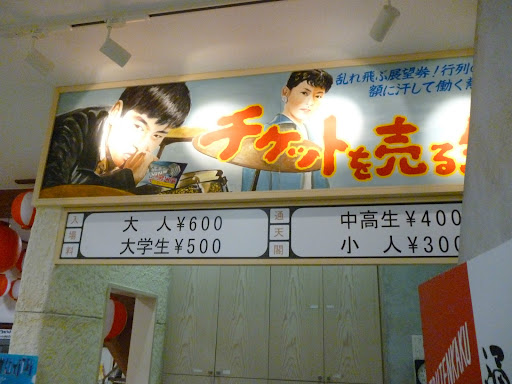Chuan Yang
age ~42
from Portland, OR
- Also known as:
-
- An Yang Chu
Chuan Yang Phones & Addresses
- Portland, OR
- 17176 NW Broken Top Dr, Beaverton, OR 97006
- State College, PA
- Pittsburgh, PA
- Tampa, FL
- 16 Melba Pl, Pittsburgh, PA 15213
Work
-
Company:The pennsylvania state universityAug 2008
-
Position:Graduate research assistant
Education
-
School / High School:University of Pittsburgh- Pittsburgh, PAMay 2008
-
Specialities:M.S. in Physics
Skills
Matlab • LabVIEW • OptiFDTD • Zemax • Origin TM • C/C++; Femtosecond Ti:Sapphire las... • fiber laser • spectrometers • OSA • oscilloscopes • lock-in amplifiers • FIB • SEM • soft lithography
Us Patents
-
Compact Spectrometer Including A Diffractive Optical Element With Dual Dispersion And Focusing Functionality
view source -
US Patent:20120038918, Feb 16, 2012
-
Filed:Aug 12, 2011
-
Appl. No.:13/208922
-
Inventors:Zhiwen Liu - State College PA, US
Chuan Yang - State College PA, US
Kebin Shi - Beijing, CN
Perry Edwards - State College PA, US -
International Classification:G01J 3/18
B29D 11/00
G02B 5/18 -
US Classification:356328, 359571, 264 27
-
Abstract:Embodiments of the invention provide a device called a “G-Fresnel” device that performs the functions of both a linear grating and a Fresnel lens. We have fabricated the G-Fresnel device by using PDMS based soft lithography. Three-dimensional surface profilometry has been performed to examine the device quality. We have also conducted optical characterizations to confirm its dual focusing and dispersing properties. The G-Fresnel device can be useful for the development of miniature optical spectrometers as well as emerging optofluidic applications. Embodiments of compact spectrometers using diffractive optical elements are also provided. Theoretical simulation shows that a spectral resolution of approximately 1 nm can be potentially achieved with a millimeter-sized G-Fresnel. A proof-of-concept G-Fresnel-based spectrometer with subnanometer spectral resolution is experimentally demonstrated.
-
Laser Processing Apparatus, Methods Of Laser-Processing Workpieces And Related Arrangements
view source -
US Patent:20190001442, Jan 3, 2019
-
Filed:Sep 8, 2016
-
Appl. No.:15/750140
-
Inventors:- Portland OR, US
Chuan Yang - Portland OR, US
Jan Kleinert - Portland OR, US
Mark Peeples - Portland OR, US
Hugh Owens - Portland OR, US
Gwendolyn Byrne - Portland OR, US
Haibin Zhang - Portland OR, US
Justin Redd - Portland OR, US
Corie Neufeld - Portland OR, US
James D. Brookhyser - Portland OR, US
Yasu Osako - Portland OR, US
Mehmet Alpay - Portland OR, US
Zhibin Lin - Portland OR, US
Patrick Riechel - Portland OR, US
Tim Nuckolls - Portland OR, US
Hisashi Matsumoto - Portland OR, US
Chris Ryder - Portland OR, US -
International Classification:B23K 26/382
B23K 26/082
B23K 26/70
B23K 26/0622 -
Abstract:Apparatus and techniques for laser-processing workpieces can be improved, and new functionalities can be provided. Some embodiments discussed relate to processing of workpieces in a manner resulting in enhanced accuracy, throughput, etc. Other embodiments relate to realtime Z-height measurement and, when suitable, compensation for certain Z-height deviations. Still other embodiments relate to modulation of scan patterns, beam characteristics, etc., to facilitate feature formation, avoid undesirable heat accumulation, or otherwise enhance processing throughput. A great number of other embodiments and arrangements are also detailed.
-
Fast Beam Manipulation For Cross-Axis Miromaching
view source -
US Patent:20160250714, Sep 1, 2016
-
Filed:Feb 26, 2016
-
Appl. No.:15/055037
-
Inventors:- Portland OR, US
Chuan Yang - Beaverton OR, US
Mark Alan Unrath - Portland OR, US
Martin Orrick - Hillsboro OR, US -
International Classification:B23K 26/0622
B23K 26/06
B23K 26/352
B23K 26/00 -
Abstract:A laser processing system includes a first positioning system () for imparting first relative movement of a beam axis along a beam trajectory () with respect to a workpiece (), a processor for determining a second relative movement of the beam axis () along a plurality of dither rows, a second positioning system () for imparting the second relative movement, and a laser source () for emitting laser beam pulses. The laser beam pulses of individually selected energies can be directed to individually selected transverse spot locations () one or more times during a primary laser pass to permit three-dimensional patterning. The laser beam pulses can also be directed to the spatially identical, overlapping, or non-overlapping neighboring spot area locations on the workpiece in a temporally nonsequential order.
-
Laser Systems And Methods For Internally Marking Thin Layers, And Articles Produced Thereby
view source -
US Patent:20150050468, Feb 19, 2015
-
Filed:Aug 15, 2014
-
Appl. No.:14/461171
-
Inventors:- Portland OR, US
Chuan YANG - Portland OR, US
Fang SHAN - San Jose CA, US -
International Classification:B41J 2/455
-
US Classification:4281951, 347225
-
Abstract:Laser output () is employed to mark an article () including a layer () supported by a substrate (), wherein the layer () has a thickness (t) that is less than or equal to 50 microns. The laser output () is focused to a numerical aperture diffraction-limited spot size () of less than or equal to 5 microns at a focal point () of the beam waist () and directed into the layer () to form a plurality of structures comprising a plurality of laser-induced cracks within the layer () and within a region of the article (), wherein the laser-induced cracks terminate within the layer () without extending to the substrate () or an outer surface () of the layer (), and wherein the plurality of structures are configured to scatter light incident upon the article ().
-
Z-Microscopy
view source -
US Patent:20140146159, May 29, 2014
-
Filed:Nov 29, 2013
-
Appl. No.:14/093188
-
Inventors:Zhiwen Liu - State College PA, US
Chuan Yang - State College PA, US
Kebin Shi - Beijing, CN
Mingda Zhou - State College PA, US
Siyang Zheng - State College PA, US
Shizhuo Yin - State College PA, US -
Assignee:The Penn State Research Foundation - University Park PA
-
International Classification:G02B 21/36
-
US Classification:348 79, 430 8, 427162
-
Abstract:We present a method for parallel axial imaging, or z-microscopy, utilizing an array of tilted micro mirrors arranged along the axial direction. Image signals emitted from different axial positions can be orthogonally reflected by the corresponding micro mirrors and spatially separated for parallel detection, essentially converting the more challenging axial imaging to a lateral imaging problem. Each micro mirror also provides optical sectioning capability due to its finite dimension.
Wikipedia

Yang Chuankwang
view sourceYang Chuan-kwang, or C.K. Yang (simplified Chinese: ; traditional Chinese: ; pinyin: Yng Chungung) (10 July 1933 in Taitung, Taiwan January ...
Resumes

Senior Data Scientist
view sourceLocation:
17176 northwest Broken Top Dr, Beaverton, OR 97006
Industry:
Computer Software
Work:
Apple
Senior Data Scientist
Educational Services, Inc.
Research Scientist
Mks Instruments
Research Scientist
Senior Data Scientist
Educational Services, Inc.
Research Scientist
Mks Instruments
Research Scientist
Education:
Pennsylvania State University 2008 - 2013
Doctorates, Doctor of Philosophy, Electrical Engineering University of Pittsburgh 2006 - 2008
Masters, Physics University of Science and Technology of China 2001 - 2005
Bachelors, Bachelor of Science, Physics Tianjin Nankai High School 1998 - 2001
Doctorates, Doctor of Philosophy, Electrical Engineering University of Pittsburgh 2006 - 2008
Masters, Physics University of Science and Technology of China 2001 - 2005
Bachelors, Bachelor of Science, Physics Tianjin Nankai High School 1998 - 2001
Skills:
Nonlinear Optics
Optical Microscopy
Laser Physics
Django
Amazon Web Services
Apache Spark
Data Analysis
Sql
Anova
Docker
Scala
Design of Experiments
Hadoop
Python
Git
C#
R Programming
Design of Experiments
Matlab
Optics
Sem
Fiber Optics
Labview
Sputtering
Fluorescence Microscopy
Fluorescence Spectroscopy
Optical Microscopy
Laser Physics
Django
Amazon Web Services
Apache Spark
Data Analysis
Sql
Anova
Docker
Scala
Design of Experiments
Hadoop
Python
Git
C#
R Programming
Design of Experiments
Matlab
Optics
Sem
Fiber Optics
Labview
Sputtering
Fluorescence Microscopy
Fluorescence Spectroscopy

Chuan Yang
view source
Student At Penn State University
view source
Chuan Yang State College, PA
view sourceWork:
The Pennsylvania State University
Aug 2008 to 2000
Graduate Research Assistant
Aug 2008 to 2000
Graduate Research Assistant
Education:
University of Pittsburgh
Pittsburgh, PA
May 2008
M.S. in Physics The Pennsylvania State University
University Park, PA
Ph.D in Electrical Engineering
Pittsburgh, PA
May 2008
M.S. in Physics The Pennsylvania State University
University Park, PA
Ph.D in Electrical Engineering
Skills:
Matlab, LabVIEW, OptiFDTD, Zemax, Origin TM, C/C++; Femtosecond Ti:Sapphire laser systems, fiber laser, spectrometers, OSA, oscilloscopes, lock-in amplifiers, FIB, SEM, soft lithography
Youtube
Flickr
Googleplus

Chuan Yang
Work:
Nexdoor - GUI Designer

Chuan Yang

Chuan Yang

Chuan Yang

Chuan Yang

Chuan Yang

Chuan Yang

Chuan Yang
Myspace

Chuan Yang
view sourceBirthday:
1950

Chuan Yang
view sourceBirthday:
1950

Chuan Yang
view sourceFriends:
William Huang, Uting Lo

Chi Chuan Yang
view source
Shiang Chuan Yang
view sourceFriends:
Ya-wen Lu, Arthur Ku, Boa Chiang, Core Liu, Po Wei Chen

Sim Chuan Yang
view sourceFriends:
Yongkai Liang, Dionne Teo, Carel Ong, Dinesh Sawlani

Chuan Yang
view sourceFriends:
Wenjie Zheng, Dan Wong, Chen Xiao, Lucas Lopold De Ferrante

Xiao Chuan Yang Andy
view sourceFriends:
Lara Kwan, Lee Kendy, Samuelson Ramos, Chris Wan, Andrew Wong, Clare Coppel
Classmates

Don Mills Collegiate Inst...
view sourceGraduates:
chuan Yang (1992-1996),
Guy Tripp (1973-1977),
Victoria Martin (1968-1972),
Carl Thompson (1969-1973)
Guy Tripp (1973-1977),
Victoria Martin (1968-1972),
Carl Thompson (1969-1973)

University of Tennessee, ...
view sourceGraduates:
Wayne Tankesley (1971-1975),
chuan Yang (1989-1993),
Larry Williams (1975-1978)
chuan Yang (1989-1993),
Larry Williams (1975-1978)

University of California,...
view sourceGraduates:
Frank Charles Plimier (1955-1966),
Rebbeca Blevins (1965-1970),
David Yoo (1993-1998),
Ming Chuan Yang (2000-2000)
Rebbeca Blevins (1965-1970),
David Yoo (1993-1998),
Ming Chuan Yang (2000-2000)

Morrison Christian Academ...
view sourceGraduates:
Chuan Kwang Yang Jr (1983-1985),
Dan Day (1973-1975),
Michelle Yang (1994-1998)
Dan Day (1973-1975),
Michelle Yang (1994-1998)

Boston State College - Gr...
view sourceGraduates:
Chuan Kwang Yang Jr (1994-1995),
Stephen Pacifico (1966-1968),
Cheryl Phippen Fontes (1978-1979)
Stephen Pacifico (1966-1968),
Cheryl Phippen Fontes (1978-1979)

Massachusetts Institute o...
view sourceGraduates:
Norman Tisdale (1946-1950),
Jim Calhoun Jim Calhoun (1984-1988),
Chuan Kwang Yang Jr (1991-1993)
Jim Calhoun Jim Calhoun (1984-1988),
Chuan Kwang Yang Jr (1991-1993)

Los Angeles Trade - Techn...
view sourceGraduates:
Chuan Kwang Yang Jr (1984-1986),
Linda Thibault (1968-1969),
Jackie Fletcher (1971-1973),
Susie Pritchard (1988-1989),
William Sharp (1975-1978)
Linda Thibault (1968-1969),
Jackie Fletcher (1971-1973),
Susie Pritchard (1988-1989),
William Sharp (1975-1978)

California State Polytech...
view sourceGraduates:
Jonathan Hill (1991-1992),
Chuan Kwang Yang Jr (1986-1989),
Joseph Navarra (1967-1969),
Denise Broxton (1987-1989)
Chuan Kwang Yang Jr (1986-1989),
Joseph Navarra (1967-1969),
Denise Broxton (1987-1989)
Get Report for Chuan Yang from Portland, OR, age ~42













